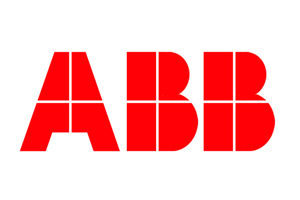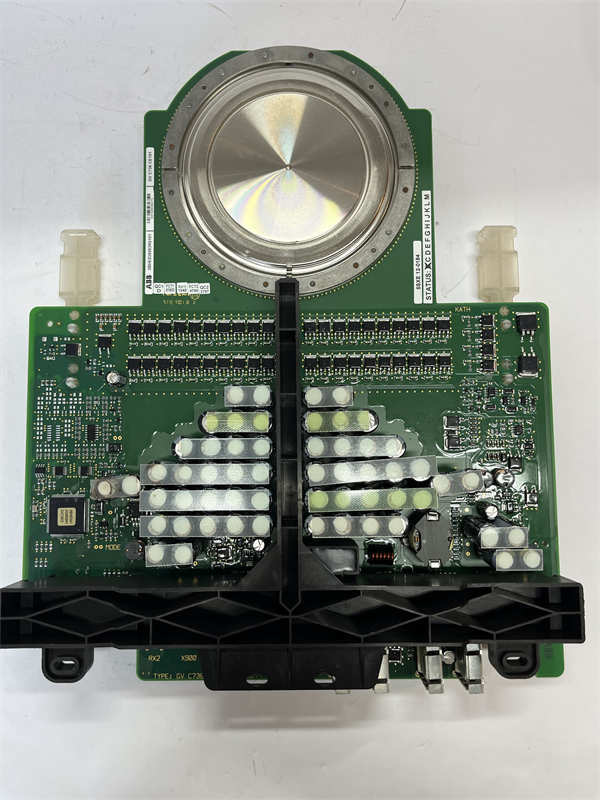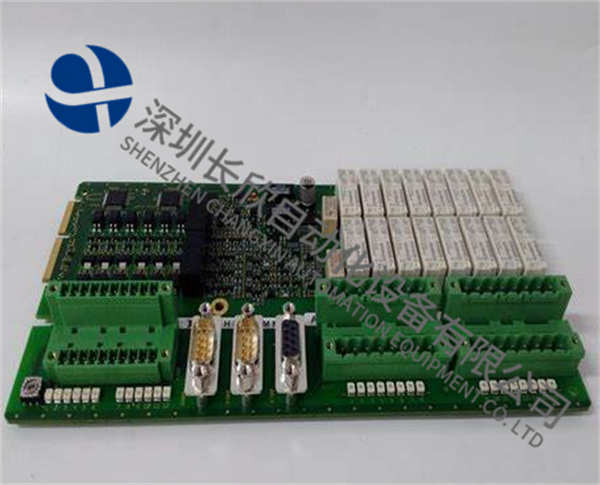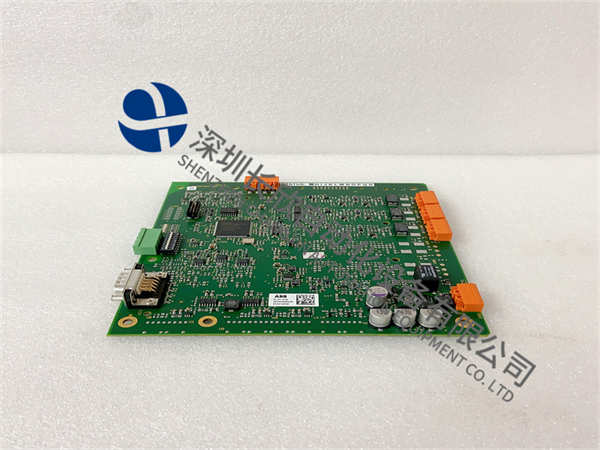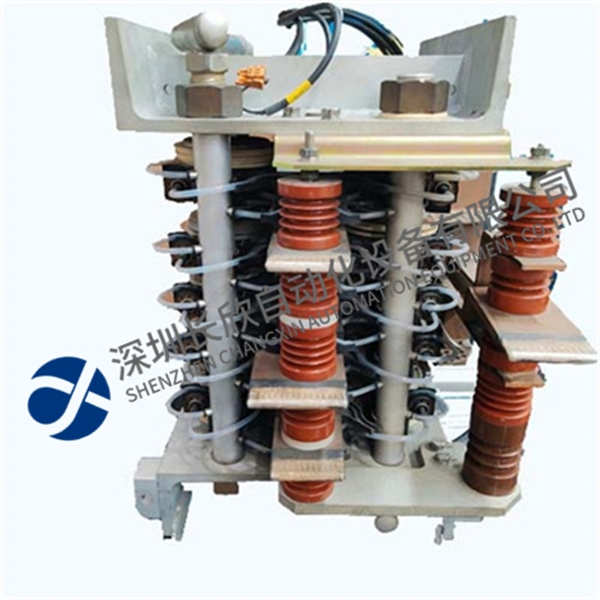描述
ABB PFTL201C 10KN 3BSE007913R1产品详情
一、基本信息
品牌:ABB(全球工业自动化与电力技术领导者,专注于数字化、智能制造及过程控制领域)
型号:PFTL201C 10KN(产品编号:3BSE007913R1)
类型:张力传感器(Tension Sensor),属于ABB的张力测量与控制产品线,专为工业卷绕、拉伸、分切等过程设计。
用途:用于实时测量卷材(如纸张、薄膜、金属箔、线缆)的张力,并将信号传输至控制系统(如ABB 800xA DCS、AC800M控制器),实现张力的闭环控制,确保卷材加工过程的稳定性与产品质量。
二、技术规格
1.核心参数
测量范围:
额定张力:10 kN(千牛顿,约1吨力),可根据应用需求选择其他量程(如5 kN、20 kN)。
过载能力:通常为额定值的150%(即15 kN),短期承受而不损坏。
精度与分辨率:
线性度:±0.1%F.S.(满量程,典型工业级精度)。
重复性:±0.05%F.S.,确保多次测量的一致性。
分辨率:0.01%F.S.(高精度设计,满足微小张力变化检测)。
输出信号:
模拟量输出:4~20 mA(典型工业信号,抗干扰能力强)。
可选数字输出:支持Modbus RTU、PROFIBUS DP等通信协议(需配置)。
2.机械与结构
安装方式:
导辊式张力传感器:通过轴承支撑的导辊测量卷材张力,导辊直径通常为100~200mm(可选)。
固定方式:支持两侧法兰安装或脚座安装,适应不同设备布局。
材质与防护:
导辊材质:不锈钢或镀铬钢,耐腐蚀且表面光滑,减少卷材磨损。
防护等级:IP65(防尘防水,适应潮湿或多尘环境)。
温度范围:工作温度-20℃至+80℃,存储温度-40℃至+85℃。
3.电气与通信
电源要求:
供电电压:24 VDC(±10%),功耗≤5 W(低功耗设计)。
通信接口:
支持模拟量信号直接连接至PLC或控制器(如ABB AC800M)。
可选配数字通信模块(如3BSE007914R1),实现远程监控与诊断。
4.动态性能
响应时间:≤10 ms(快速响应张力变化,适用于高速卷绕设备)。
频率响应:0~100 Hz(覆盖大多数工业卷材加工的动态范围)。
三、产品优势
高精度与稳定性
采用应变片技术(Strain Gauge)与高精度信号调理电路,确保长期测量的可靠性。
内置温度补偿功能,自动修正环境温度对测量的影响。
灵活集成
支持模拟量与数字量双输出模式,兼容ABB及其他品牌控制系统。
可通过ABB的ToolKit软件配置量程、零点、滤波时间等参数。
工业级耐用性
全密封结构与高防护等级(IP65),适应恶劣工业环境(如造纸、印刷车间)。
抗振动与冲击设计,符合MIL-STD-810标准。
四、应用场景
造纸与包装行业
纸张分切机:实时监测卷材张力,避免断纸或起皱。
薄膜拉伸设备:控制薄膜张力,确保厚度均匀性与机械性能。
金属加工
带钢轧制:在冷轧或热轧过程中,精确控制带钢张力,防止跑偏或断裂。
线缆生产:调节线缆张力,保证绝缘层厚度一致。
纺织与无纺布
织物涂层机:控制涂层张力,避免织物变形或涂层不均。
非织造布生产线:优化张力分布,提高产品平整度。
新能源与电子
锂电池隔膜生产:精确控制隔膜张力,防止破损或厚度波动。
光伏背板制造:调节背板张力,确保层压质量。
五、安装与调试要点
安装注意事项
导辊平行度:确保传感器导辊与卷材路径完全平行,避免侧向力干扰。
张力传递:卷材需完全包裹导辊,避免局部接触导致测量误差。
电缆布线:模拟量信号线需与动力线分开走线,减少电磁干扰。
调试步骤
零点校准:在无张力状态下,通过控制器或软件将输出调整至4 mA。
量程校准:施加已知张力(如砝码或校准设备),调整输出至20 mA。
滤波设置:根据卷材速度与张力波动频率,优化滤波时间常数(如10~100 ms)
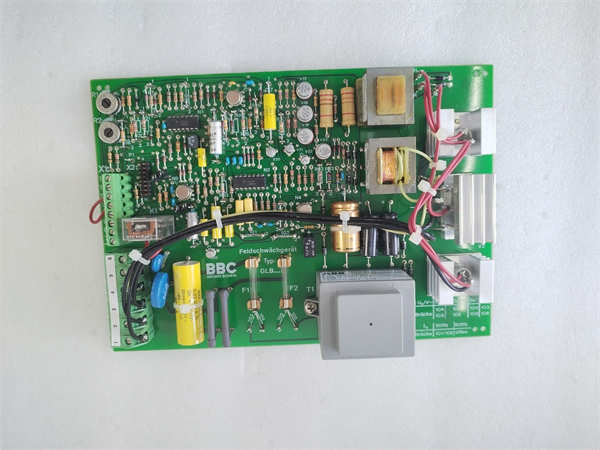
PFTL101B 5.0KN 3BSE004191R1
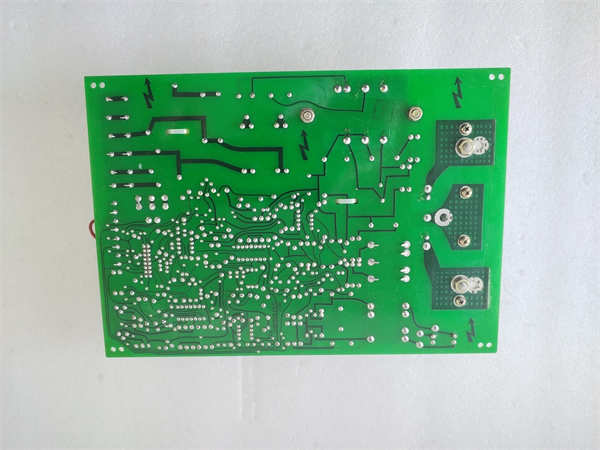
PFTL101B 5.0KN 3BSE004191R1
。
ABB PFTL201C 10KN 3BSE007913R1 Product Details
I.Basic Information
Brand:ABB(global leader in industrial automation and power technology,focusing on digitalization,intelligent manufacturing and process control)
Model:PFTL201C 10KN(Product No.:3BSE007913R1)
Type:Tension Sensor,belonging to ABB’s tension measurement and control product line,designed for industrial winding,stretching,slitting and other processes.
Use:Used to measure the tension of coils(such as paper,film,metal foil,cable)in real time,and transmit the signal to the control system(such as ABB 800xA DCS,AC800M controller)to achieve closed-loop control of tension and ensure the stability of the coil processing process and product quality.
II.Technical Specifications
1.Core Parameters
Measurement Range:
Rated Tension:10 kN(kilonewton,about 1 ton of force),other ranges(such as 5 kN,20 kN)can be selected according to application requirements.
Overload capacity:usually 150%of the rated value(i.e.15 kN),which can withstand short-term without damage.
Accuracy and resolution:
Linearity:±0.1%F.S.(full scale,typical industrial-grade accuracy).
Repeatability:±0.05%F.S.,ensuring consistency of multiple measurements.
Resolution:0.01%F.S.(high-precision design to meet the detection of small tension changes).
Output signal:
Analog output:4~20 mA(typical industrial signal,strong anti-interference ability).
Optional digital output:supports Modbus RTU,PROFIBUS DP and other communication protocols(need to be configured).
2.Mechanical and structural
Installation method:
Guide roller tension sensor:The guide roller supported by the bearing measures the coil tension,and the guide roller diameter is usually 100~200mm(optional).
Fixing method:Supports flange installation on both sides or foot installation to adapt to different equipment layouts.
Material and protection:
Guide roller material:stainless steel or chrome-plated steel,corrosion-resistant and smooth surface,reducing coil wear.
Protection level:IP65(dustproof and waterproof,suitable for humid or dusty environments).
Temperature range:operating temperature-20℃to+80℃,storage temperature-40℃to+85℃.
3.Electrical and communication
Power supply requirements:
Supply voltage:24 VDC(±10%),power consumption≤5 W(low power design).
Communication interface:
Supports analog signals directly connected to PLC or controller(such as ABB AC800M).
Optional digital communication module(such as 3BSE007914R1)for remote monitoring and diagnosis.
4.Dynamic performance
Response time:≤10 ms(fast response to tension changes,suitable for high-speed winding equipment).
Frequency response:0~100 Hz(covering the dynamic range of most industrial coil processing).
3.Product Advantages
High Precision and Stability
Strain gauge technology and high-precision signal conditioning circuit are used to ensure the reliability of long-term measurement.
Built-in temperature compensation function automatically corrects the influence of ambient temperature on measurement.
Flexible Integration
Supports analog and digital dual output modes,compatible with ABB and other brand control systems.
Parameters such as range,zero point,filter time,etc.can be configured through ABB’s ToolKit software.
Industrial Durability
Fully sealed structure and high protection level(IP65)are suitable for harsh industrial environments(such as papermaking and printing workshops).
Vibration and shock resistant design,in line with MIL-STD-810 standards.
4.Application Scenarios
Papermaking and Packaging Industry
Paper Slitting Machine:Real-time monitoring of coil tension to avoid paper breakage or wrinkling.
Film Stretching Equipment:Control film tension to ensure thickness uniformity and mechanical properties.
Metal Processing
Strip Rolling:During cold or hot rolling,accurately control the strip tension to prevent deviation or breakage.
Cable Production:Adjust cable tension to ensure consistent insulation thickness.
Textiles and non-woven fabrics
Fabric coating machine:Control coating tension to avoid fabric deformation or uneven coating.
Nonwoven fabric production line:Optimize tension distribution and improve product flatness.
New energy and electronics
Lithium battery diaphragm production:Accurately control diaphragm tension to prevent breakage or thickness fluctuations.
Photovoltaic backplane manufacturing:Adjust backplane tension to ensure lamination quality.
V.Installation and debugging points
Installation precautions
Guide roller parallelism:Ensure that the sensor guide roller is completely parallel to the roll path to avoid lateral force interference.
Tension transmission:The roll must completely wrap the guide roller to avoid local contact and cause measurement errors.
Cable wiring:The analog signal line must be separated from the power line to reduce electromagnetic interference.
Debugging steps
Zero point calibration:In the tension-free state,adjust the output to 4 mA through the controller or software.
Range calibration:Apply a known tension(such as a weight or calibration device)and adjust the output to 20 mA.
Filter setting:Optimize the filter time constant(such as 10~100 ms)according to the web speed and tension fluctuation frequency.

